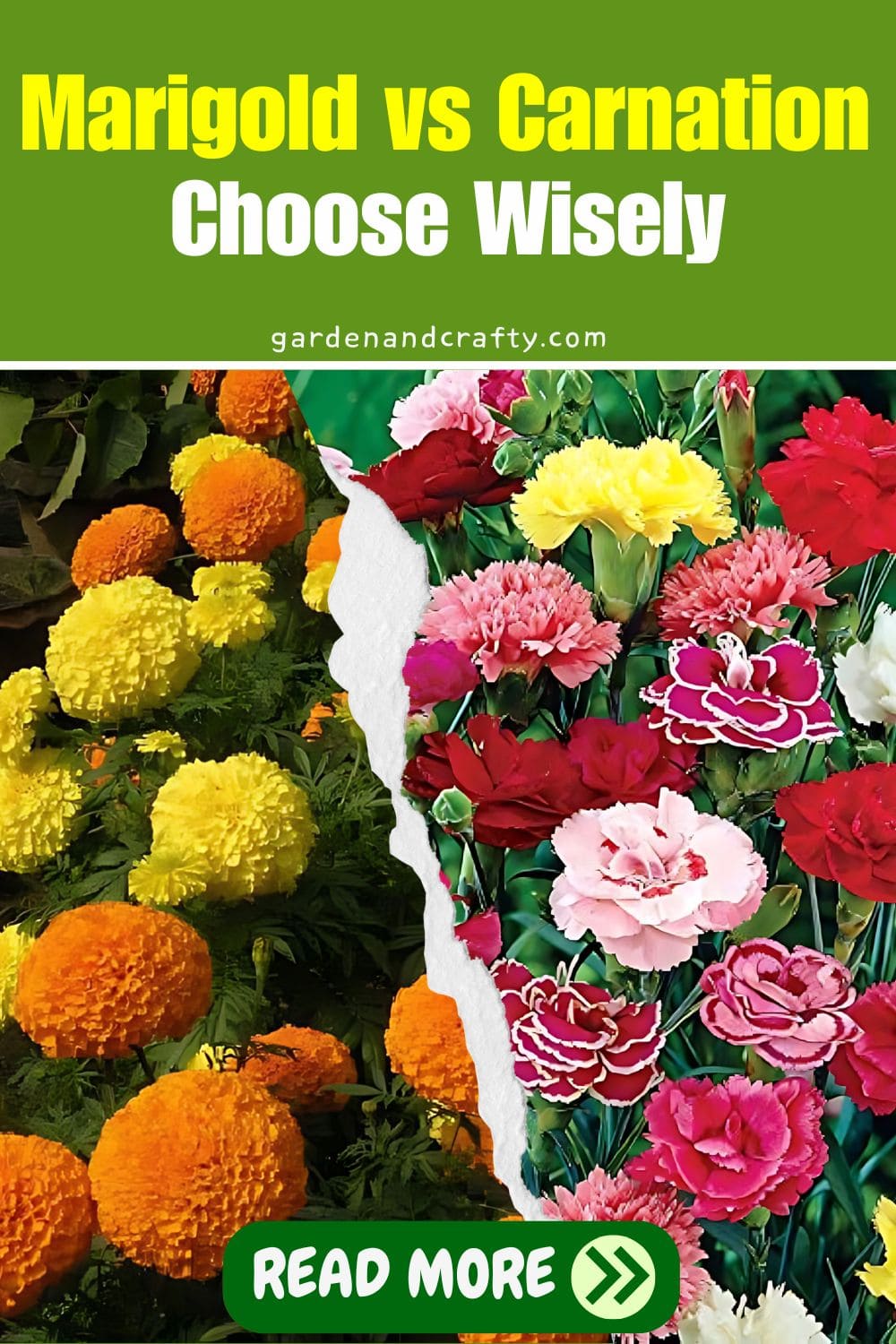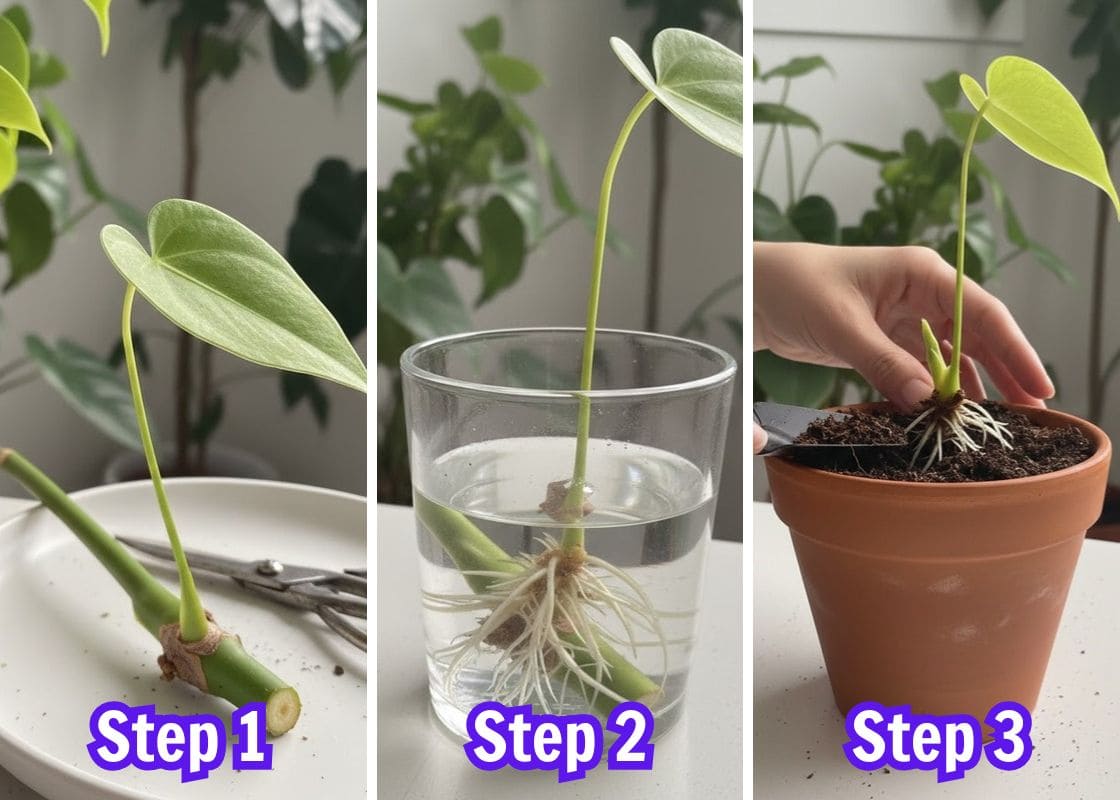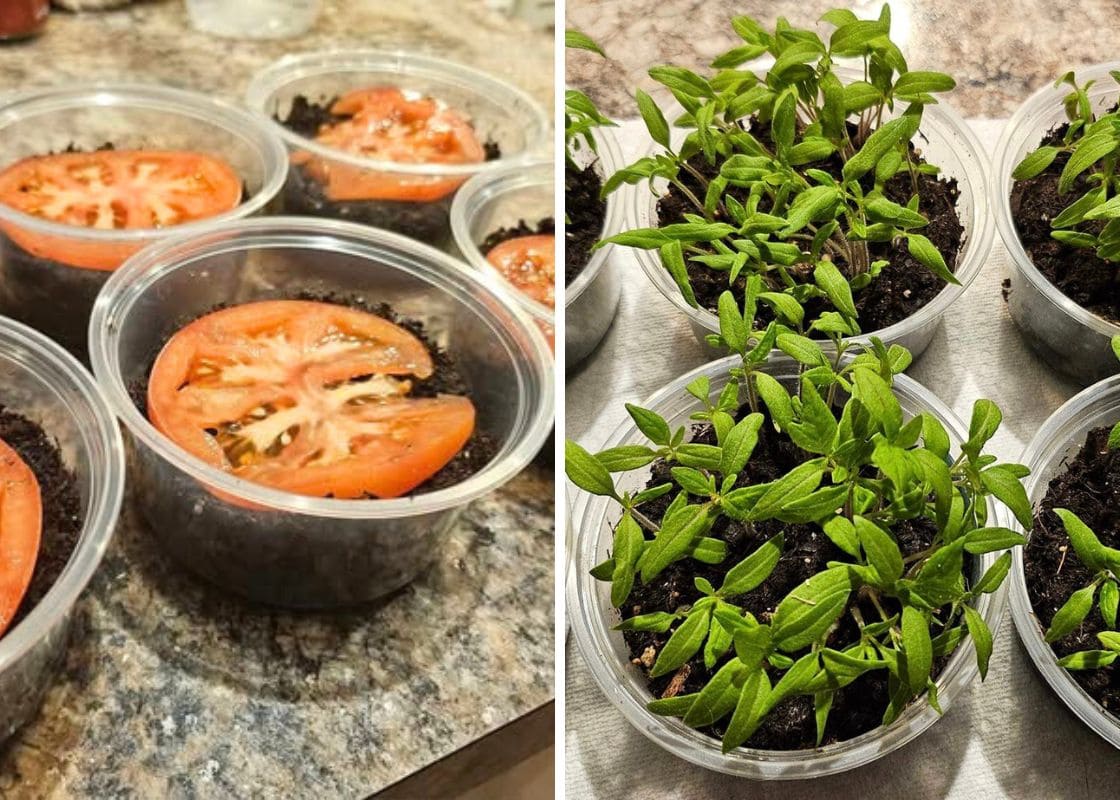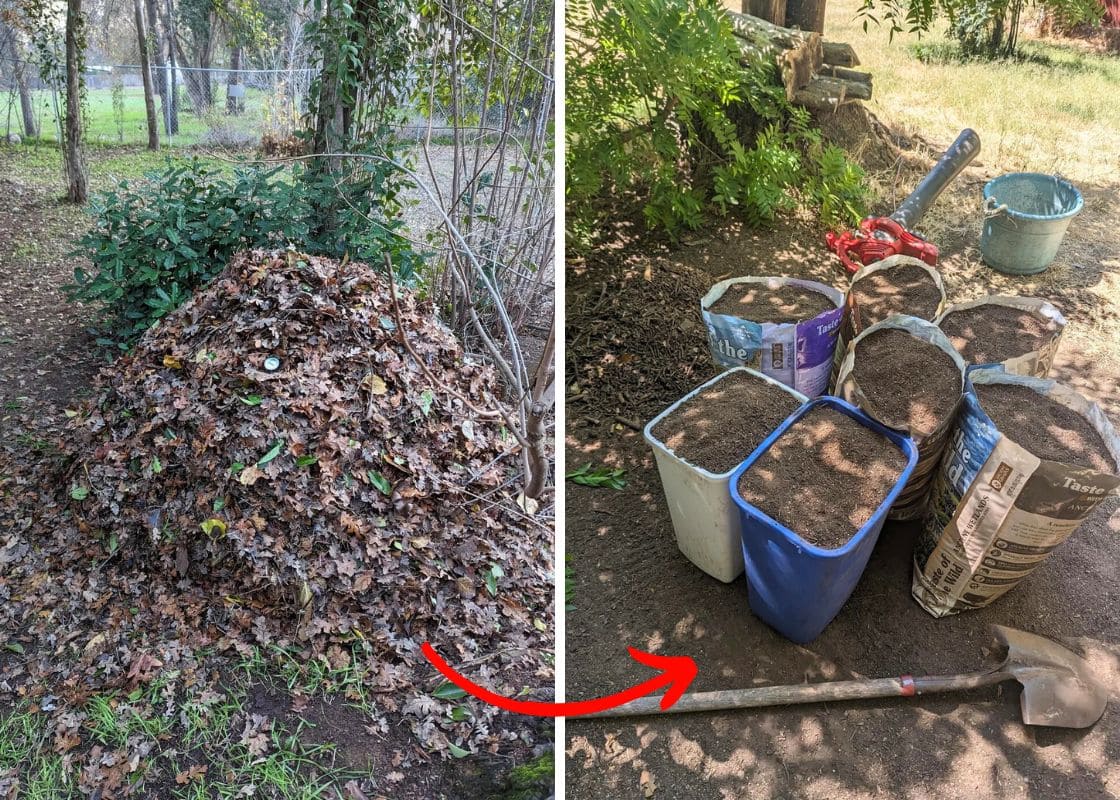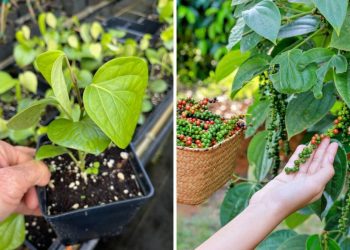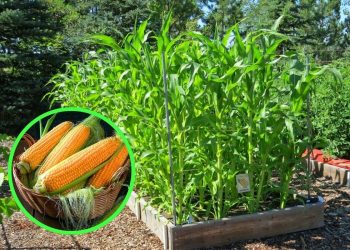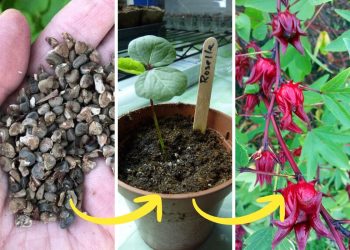When it comes to adding a splash of color and vibrancy to your garden or floral arrangements, the choice between marigolds and carnations can be both delightful and daunting.
Marigolds, with their large, daisy-like blooms and distinctive fragrance, offer a charming appeal, while carnations captivate with their ruffled petals and elegant demeanor.
Each of these beloved flowering plants brings its own unique charm and characteristics to the table, making the decision a matter of personal preference and practical consideration.

| Marigold | Carnation | |
| Botanical Name | Tagetes spp. | Dianthus caryophyllus |
| Common name | Marigold | Carnation, pinks |
| Family | Asteraceae | Caryophyllaceae |
| Plant Type | Herbaceous, annual | Perennial |
| Mature Size | 4–48 in. tall, 6–24 in. wide | 6-24 in. tall, 10-14 in. wide |
| Flower Color | Yellow, orange, white, red, gold, bicolor | White, pink, red |
| Flowering Season | Summer | Spring |
| USDA | 2-11 | 7-10 |
| Native | Southern North America | Europe |
Difference Between Marigold vs Carnation
Plant Type
Marigolds are herbaceous annuals, completing their life cycle within a single growing season. They grow, bloom, produce seeds, and then die back in the fall or winter.
In contrast, carnations are herbaceous perennials. While they may lose foliage in colder climates during winter, their roots remain alive underground, enabling them to regrow and bloom again in the following seasons.
This perennial nature makes carnations a longer-lasting investment in the garden compared to marigolds.
Physical Characteristics
Marigolds belong to the Asteraceae family, their composite flower heads boast dense varying from single to semi-double or double blooms, with diameters ranging from 1 to 4 inches.
Marigolds range from 6 inches to 4 feet in height, with dwarf varieties like Tagetes patula being shorter, and taller ones like Tagetes erecta reaching up to 4 feet.
Their leaves are pinnately divided, adorned with serrated or lobed edges, and emit a distinctive, spicy or pungent scent, acting as a natural deterrent to pests.
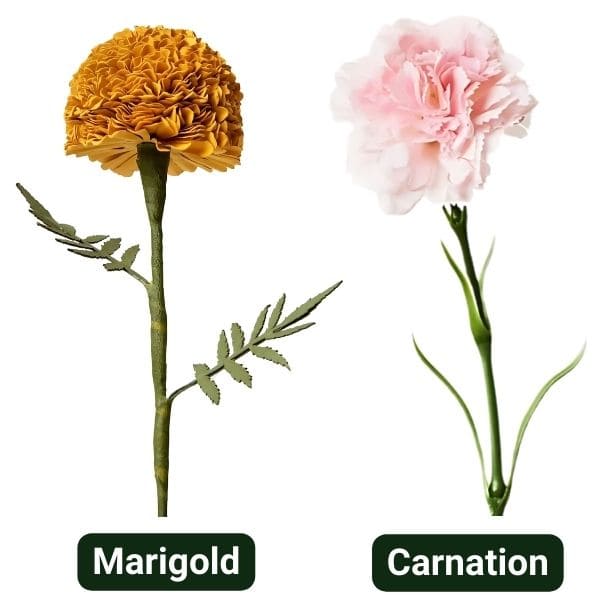
On the other hand, carnations form dense, bushy clumps. Their flowers come in various colors, often with contrasting edges or stripes.
These blooms can be double, semi-double, or single, with frilled or serrated petal edges and diameters ranging from 1 to 3 inches.
Carnations are much taller, varying in height from 9 inches to 31 inches, with gray-green or blue-green leaves arranged oppositely along slender, often branched stems.
Glaucous nodes contribute to their distinct appearance. Carnations emit a spicy, clove-like fragrance, more pronounced in certain varieties.
Cultivation
Marigolds thrive in full sun, with temperatures ranging from 70°F to 75°F, while carnations prefer full sun to partial shade, with temperatures between 50°F to 70°F.
Excessive afternoon sunlight may cause the vibrant hues of carnations to fade.
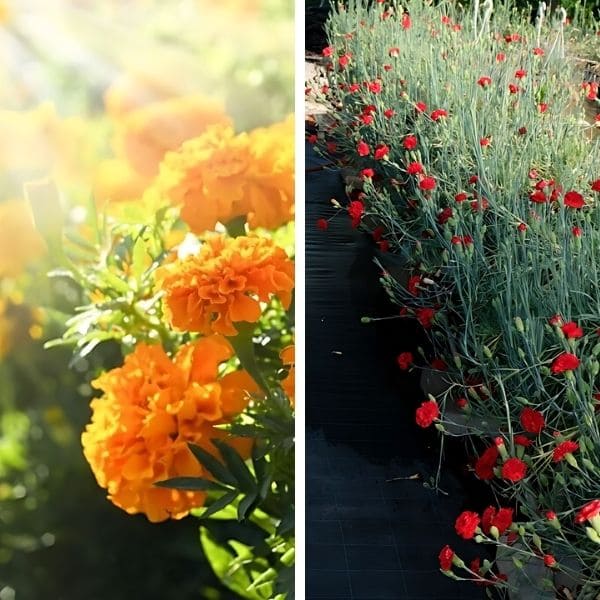
Moreover, marigolds flourish in well-drained soil with a neutral to slightly acidic pH, while carnations prefer fertile soil with slightly alkaline to neutral pH soil.
Uses
Marigolds possess medicinal properties, utilized for centuries in traditional medicine due to their anti-inflammatory and antiseptic qualities.
Moreover, their culinary applications extend to garnishing salads, soups, and desserts, adding color and a subtle citrus flavor.

In agriculture, marigolds play a vital role in companion planting, protecting vegetables from pests and enhancing soil health by suppressing harmful nematodes.
Meanwhile, carnation petals decorate various dishes and contribute to the fragrance industry. Extracts are also used in skincare products to soothe and nourish the skin.
Symbolism
Marigolds are deeply symbolic, representing resilience and protection, notably during Dia de los Muertos in Mexican culture.
They embody endurance and strength, often used to ward off pests and negative energies.
Carnations, on the other hand, are associated with love and affection, with different hues conveying nuanced emotions.
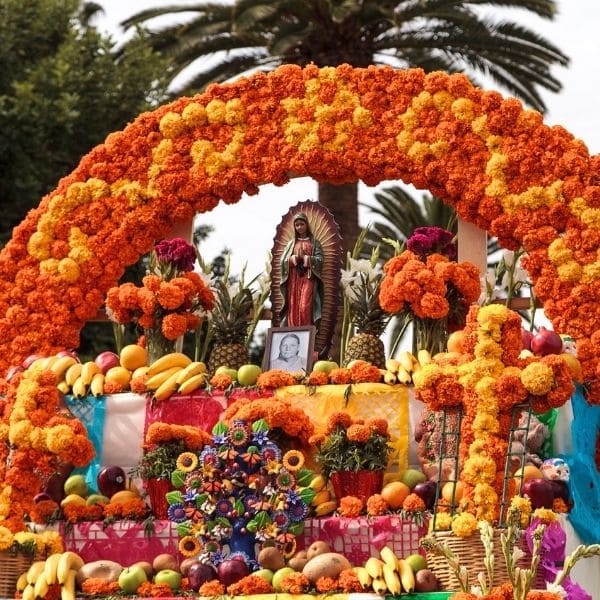
Similarities Between Marigold vs Carnation
Easy to Grow
Both marigolds and carnations are low-maintenance plants, thriving with minimal attention once established.
Additionally, two plants are remarkably easy to propagate from seeds and cuttings.
This means that gardeners can effortlessly expand their garden beds by collecting seeds or taking cuttings from existing plants.
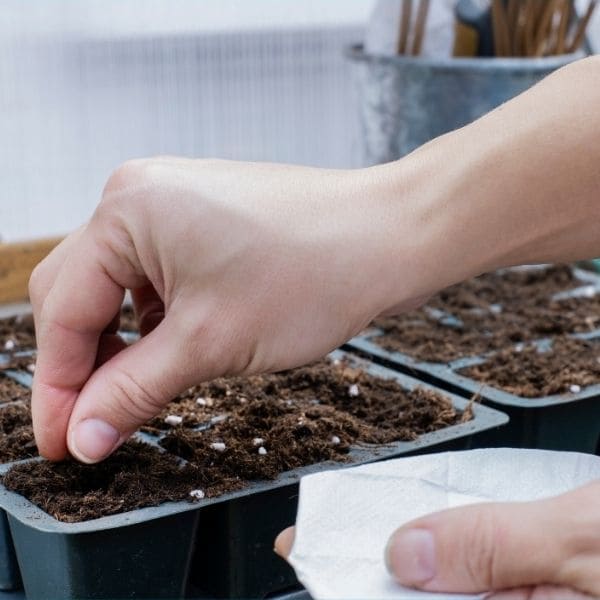
Colorful Flowers
Marigolds and carnations boast a diverse array of colors, from lively yellows and oranges to rich reds and purples.
This palette makes them perfect for gardens, floral displays, and event decor, infusing spaces with vibrant charm.
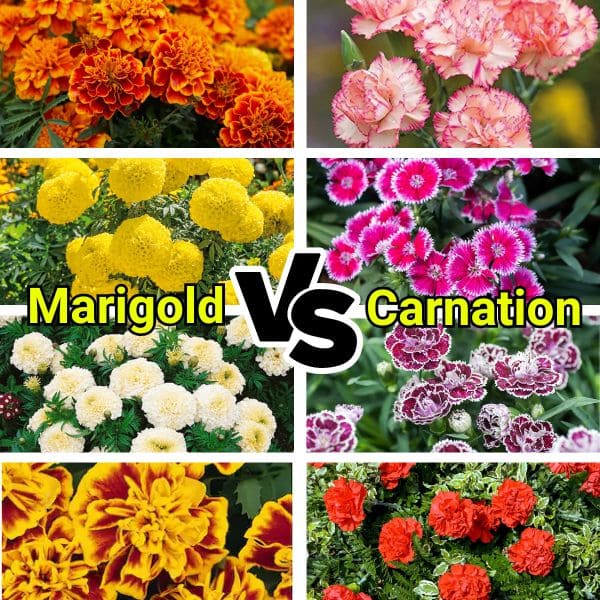
Care
Marigolds and carnations flourish in well-drained soil and sunlight. They benefit from consistent watering, allowing the soil to dry slightly between waterings to avoid root rot.
You can fertilizer periodically to support robust growth and prolific blooming.
Attract Pollinators
Marigolds and carnations serve as valuable allies in attracting pollinators, playing crucial roles in local ecosystems.
With their vibrant blooms and nectar-rich flowers, they entice bees, butterflies, and other beneficial insects and foster biodiversity in gardens and natural environments.
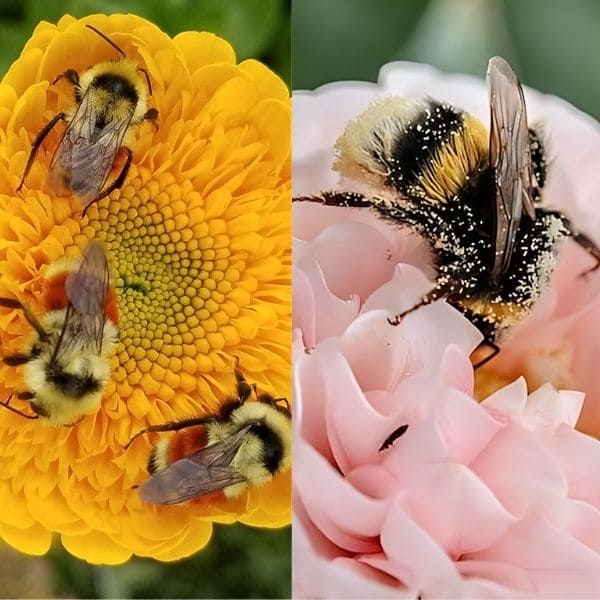
Marigold vs Carnation: Choose Wisely
If you’re cultivating a vegetable garden and prefer natural pest control methods over chemicals, marigolds are an excellent choice.
Their strong scent acts as a deterrent to pests like aphids and nematodes. However, exercise caution if you have pets, especially cats, as marigolds can be mildly toxic if ingested.
Besides, gardeners who appreciate floral arrangements or desire a fragrant garden addition will find carnations appealing.

Marigold tea can aid digestion and support the immune system, making it beneficial for health-conscious gardeners.
For skincare enthusiasts, carnation essential oil is prized in aromatherapy for its calming effects.
It can be said that each plant offers unique beauty and benefits, providing gardeners with diverse options to enhance their outdoor spaces.
You should choose the best suitable variety for a captivating and multifunctional display.
